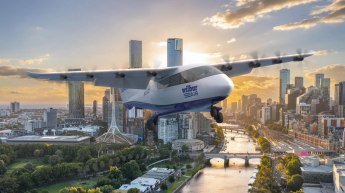This week’s Throwback Thursday feature from the Australian Aviation archive is this November 2008 airtest of the two-seat Jodel by Bob Grimstead.
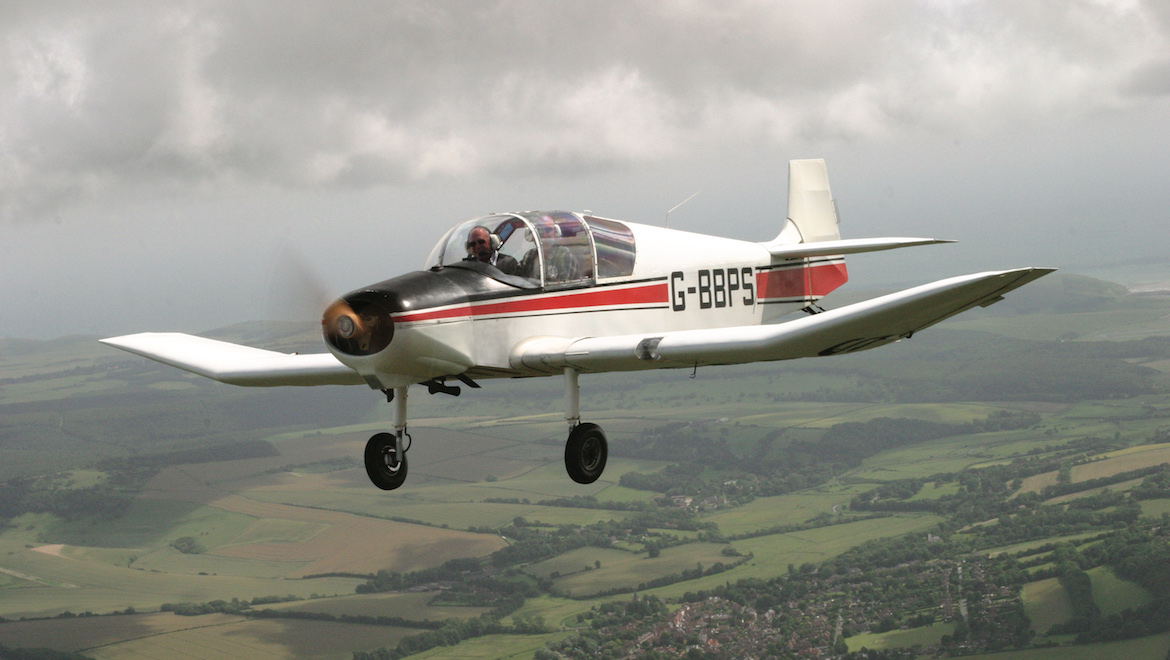
Jodels are neat, light, dainty and highly efficient, French designed, wood-and-fabric tailwheel aeroplanes.
Mostly they use trusty four-cylinder Continental A65, A75, C-85, C-90 or O-200 engines, although some later, lighter versions have Volkswagens or Jabirus. Jodels have a comparatively high cruise speed on their low (and therefore economical) power, thanks to their light weight, low drag and that efficient, semi-tapered and noticeably cranked wing that is their trademark. All Jodels have good short-field performance, and their handling is fairly benign for tailwheelers, although the four-seaters in particular can be amusing to fly with a rearward centre of gravity – especially on or off a hard runway.
The word Jodel came from combining the two designers’ names: CFI and aircraft maintenance engineer Edouard Joly and aeronautical engineer Jean Délémontez, both of whom were accomplished homebuilders. These guys (subsequently father- and son-in-law) built their first, single-seat, open cockpit Jodel (the D.9 Bébé) in 1946, just for fun. Having sketched its lines directly onto the structure, they were poorly placed when asked for production drawings. The Jodel family later became big, spanning many models, with the wooden Robins as later derivatives.
All Jodels have cranked wings and predominantly wooden construction. They might be either homebuilt or factory-produced (by several firms), and it can often be difficult to differentiate between the different models visually. Here I shall concentrate on two factory-built two-seaters built by SAN and Wassmer respectively, although at least half the Jodels flying around the world are actually amateur built.
Older Jodels were often partly or wholly assembled with water-based casein glue (although other glues have also been used, particularly in later years), so they should never be left outside. Many are 50 years old, and it only takes one wet winter in the open to cause trouble. Beware a shiny new coat of paint, which might cover underlying problems. If you are thinking of buying one, it is well worth giving it a thorough inspection, since finding a LAME sufficiently skilled in wood and fabric construction can be difficult these days, and any structural repair will inevitably be time consuming and therefore expensive.
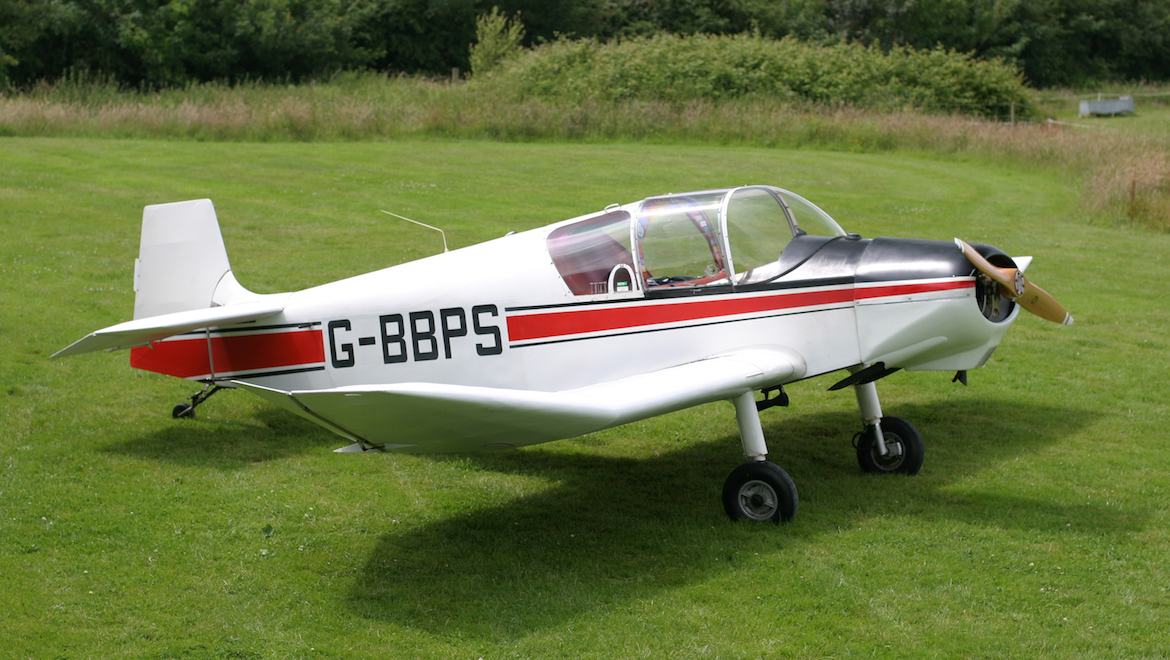
Serious structural deterioration is not unknown, and it is not unheard of, upon stripping the dacron from a Jodel’s control surfaces, to discover that the structure is only held together by the fabric! Control horns occasionally come loose, so it is a good idea to grip the surfaces and waggle these horns to check.
Also check underneath the entire airframe; ensure there are plenty of drain holes, and they are not blocked. Remove all inspection panels; wing and fuselage interiors can easily be inspected through these, and have a good sniff at each hole. Any hint of the odour of mushrooms reveals rot, which must be investigated before further flight. Tap the ribs’ upper surfaces – a change in note from one to another could indicate glue failure.
Minor flying control or wing rib repairs are fairly simple (and therefore inexpensive) to fix, but spar damage can be costly. Water inevitably drains to the trailing edges, so waggle these to reveal glue failure. Tug the ailerons to assess their supporting false spar’s integrity. Check for wing walkway sponginess; there could be rot here if the aeroplane has been outside for long.
Inspect the main undercarriage mountings. Jodel main legs break away from their attach plates if overloaded, particularly sideways, so ensure both legs are straight. Check the mainwheel tracking; they should be parallel to the aeroplane’s centreline, but are supposed to be slightly angled outwards at the top. D.120s use special brake fluid and have scissor links, which wear. The D.117s’ unusually narrow 420 by 150 tyres are no longer available, but modern American alternatives are. Owner Andy’s red Jodel has a disc brake modification, rather than its original, not very effective French drum brakes.
Significant fuselage problems can require costly re-skinning. Wing spar to fuselage, tailplane and tail spring bolts often suffer from serious corrosion because the French manufacturers did not routinely use chromate anti-corrosion paste. These should be removed regularly for checking. If they are seized, do not ignore it; that could indicate advanced corrosion going on inside.
Wooden airframes (and propellers) expand and shrink with humidity variations, so it is important to check the propeller attachment bolts and control cables every couple of months to ensure adequate tension. Waggle the controls and listen for excessive friction in the cables, which run over pulleys and through fibre friction blocks. Loose cables wear prematurely, so should be fixed soon, and replaced if exhibiting significant wear.
All cowlings can be subject to vibration damage. Fixing this early with a small fibreglass repair is easy, but leaving it and having a cowling depart in flight could be catastrophic. (The same is true of canopies.)
These small Continental engines are normally very reliable (although rather prone to carburettor icing). They do prefer to be warmed gently, and to have regular oil changes (every three months or 25 hours, whichever is sooner), so check the logbooks. Exhaust cracks are always problematic, and can be impossible to find without removal of the whole system.
Do check the empty weight, although with these small Jodels it is rarely a problem. At 348kg, G-BBPS (the red one) can lift full fuel (82kg), two 80kg blokes and even 20kg of baggage as well, while still being within its 617kg max takeoff weight.
Inside the aeroplane, do check the shoulder harness attachments. Originally only a lap strap was fitted, and some shoulder straps have unsatisfactory anchorages.


My collection of post-1979 Jodel Club newsletters covers recurring maintenance topics like: brake adjustment, repair and replacement; undercarriage rubbers and servicing; fuel pump and cock repair and replacement; tailwheel springs and shimmying; and sourcing parts. This has mostly been solved by British enthusiast Pete Smoothy’s Airworld (UK).
All Jodels are tailwheelers, with proper control columns, sprightly handling, great all-round visibility and excellent cruise performance, so they probably appeal to the more outgoing and adventurous among us. Most of the single and two-seaters have no flaps, but some do have spoilers to increase their descent angle for landing.
Jodels are prized by folk who appreciate value for money, particularly if they enjoy rolling up their sleeves and working on their own aeroplanes – and their structures, systems and Continental engines are not complex, so this is far from difficult.
Lucién Quérey was an enthusiastic aeromodeller and glider pilot, a dynamic businessman, and an early Jodel convert. His SAN factory initially concentrated on equipping previously constructed Jodel D.112s with radios but, realising the type’s potential, he obtained a licence to build production models. Re-designated and improved as the D.117, the first of these was completed in 1953. Quérey later felt his Jodels didn’t have enough drag for a sensible approach angle, so he designed and fitted under-wing spoilers or airbrakes as an option. His company, SAN, eventually sold 1098 Jodels. The red-flashed example in these photos is a 1957 SAN Jodel D.117 with a 90hp (67kW) Continental C-90-14F engine.
Wassmer was a woodworking concern in another part of France that started building Jodels in 1955. Altogether, they made 712 D.112s (with 65hp/48kW engines) and D.120s (with 90hp/67kW engines). The blue-flashed Jodel illustrated here is a 1960 Wassmer Jodel D.120A (the A is for airbrakes) with the same 90hp (67kW) Continental engine as the other aeroplane.
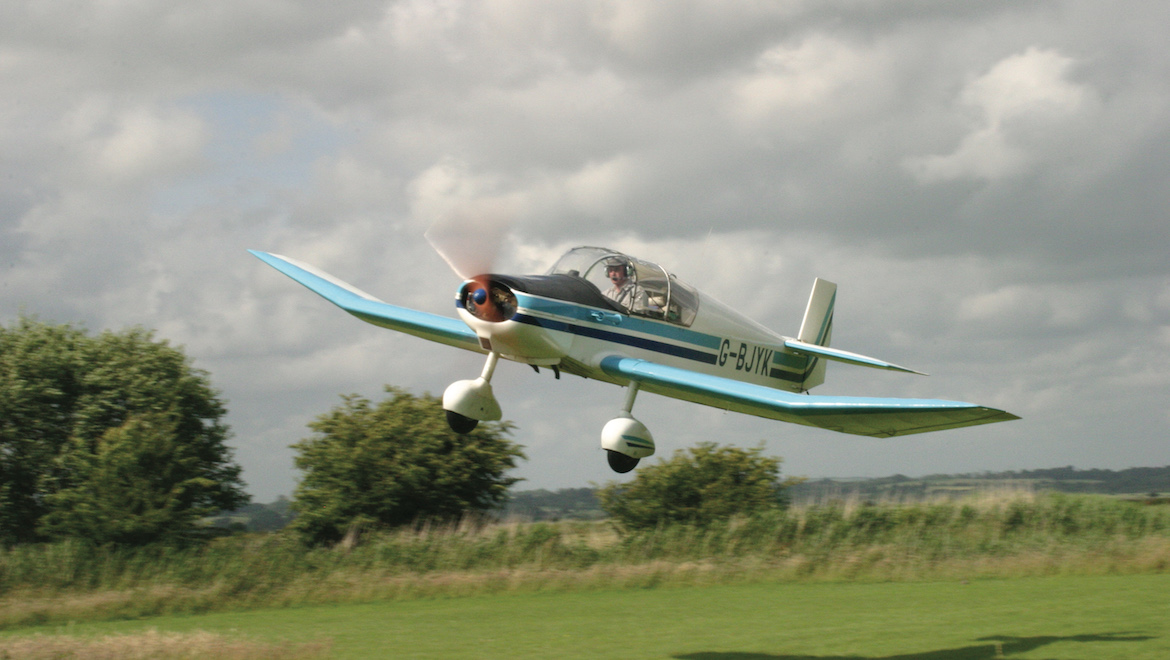
Any little Jodel is a friendly aeroplane, with a structure that is very light for its size but remarkably strong. Hand-built from spruce, gaboon ply and Ceconite fabric, at just 350kg, most Jodels are far lighter than a 535kg Cessna 152 or Piper Tomahawk, and yet, with +5.6/-2.8g design load factors, much stronger than both those boring metal aeroplanes.
The classic Jodel cranked wing uses the common NACA 23012 aerofoil. Out on its upturned tips are simple, unsophisticated, constant-chord ailerons with very little differential action. The red example here has no flaps, but the otherwise similar blue one has the under-belly airbrakes that work like flaps for landing.
Despite its rounded top-decking, the Jodel fuselage is basically a slab-sided, rectangular cross-section plywood box, so it needs no fin other than the small fibreglass fillet that distinguishes a SAN D.117 from a Wassmer D.120. The all-flying rudder is generously-sized, and there is a conventional fixed tailplane, plus dual elevators with a small trim tab. As well as the standard, all-flying fin/rudder, some later Jodels also used an all-flying ‘monobloc’ tailplane or stabilator.
The fuselage sits at a low ground angle, giving good forward visibility. Fuel is contained in two tanks. The front one ahead of the cockpit holds 60 litres, and must be used for takeoff and landing, while the rear tank under the baggage shelf holds an additional 55 litres. A stout transverse handle in the rear fuselage, which the D.120A lacks, aids ground manhandling the D.117.
With doors on both sides of the cabin, you enter by hopping up on to the low trailing-edge of either wing, moving carefully forward along the walkway to avoid puncturing the wing’s fabric covering, and lifting a canopy half. These latch open, and although hinged along the middle, they do not touch like a Condor’s, so it is fine to open both at once. The cockpit is 1.02 metres wide – 10 cm wider than a 152’s – but feels even roomier still, thanks to its low canopy sills and extensive transparency. This, plus the slim canopy and windscreen support tubes, downward-sloping upper engine cowling, and a low instrument panel combine to give exceptionally good forward visibility for a tailwheeler.
Both aeroplanes’ seats have very comfortable (and safe) conformal foam cushions, although, because the squabs are a little thicker than the originals, the never-excess headroom might suffer slightly. The red SAN D.117 has a blown ‘bubble’ windscreen, while the blue Wassmer D.120A’s screen is a simpler, single-curvature perspex or plexiglas sheet.
Most Jodels have simple but adequate instrumentation. G-BBPS’s standard panel contains six primary instruments: ASI, compass, VSI, altimeter, turn-and-slip and tachometer. To the left is a quirkily Gallic multifunction fuel gauge, indicating the selected tank’s contents, but supplementing this with warning lights for both low fuel and low oil pressure and also, for some strange reason, generator amps. The similarly unconventional French magneto switch is alongside – this rotating knob is pulled out to select both mags on and then rotated left and right to switch off either in turn. The last small knob controls cabin heat, and there is no parking brake (another D.120 luxury).
Along the panel’s bottom are push-pull knobs for mixture, throttle and carby heat, with the yellow rotating fuel selector in the middle. The starter button and fuses are over on your right, while a neat radio is installed down on the left. Other Jodels might have more or less instrumentation or even be completely lacking in electrics, necessitating hand-swinging the propeller. This might seem anachronistic in the 21st Century, but it does keep the airframe ultra-light, and is no chore with these easy-starting Continentals (I have two, and they both start at the first gentle swing after six priming turns).
Like Rallyes and Austers, all Jodels’ dual control columns are joined at a centre-cockpit hinge, so the hand-grips move up and down through a small arc as the sticks are moved from side-to-side but, having initially noticed it, you will soon forget this eccentricity. Some Jodels have one or two throttles working up and down in vertical slots in the panel (as both these examples once did). Again, although unusual, in practice and with familiarity, this presents no problems.
As expected, with its electric starter, this little C-90 started easily after a couple of priming pumps on the throttle. The aeroplane’s simple suspension is just a stack of hollow oval rubber blocks in compression, but nevertheless comfortable, if a little stiff. The steerable tailwheel makes gentle turns easy, but only the left occupant has brake pedals and, being suspended above, inboard and separate from the rudder pedals, these are not as well positioned as they might be. Like many Jodel pilots, to turn while taxying, I found myself first applying full right rudder and then dabbing the right brake pedal with my left toes for a really tight turn. Andy warned against turning too tightly when solo, or without any fuel in the rear tank – many a Jodel has been tipped up and broken its propeller in this way.
Despite only producing a mere 90 horses, the small Continental endows this lightweight aeroplane with a remarkably good takeoff and climb, especially considering this is a full 20 per cent less power (and therefore lower fuel consumption) than in even a humble Cessna 152. You need quite a lot of right rudder deflection to keep straight, but the pedal pressure is not high, and the aeroplane is so light, accelerates so rapidly and lifts off at such a low speed that this does not last for long. We were airborne after a mere 150m in a temperature of 20°C and into a gentle 10kt headwind. With no flaps to retract and no electric pump to turn off, there are no after takeoff checks, which is always nice. The climb rate, two-up, was around 800ft/min, which is remarkably good on just 90hp (67kW).
All this delightful aeroplane’s controls are light and effective. The ailerons might be a little heavier than the elevator and the rudder, but barely so. Even at a fast 125kt they were not unduly heavy, and caused just a little adverse yaw at all speeds. Stability is good in all three axes, and despite it being a bumpy day, I could find no evidence of a mild Dutch Roll some other writers have mentioned. In fact, the aircraft is so very stable that it will fly for extended periods with your hands and feet completely clear of the controls, which is quite unusual for a low-winged aeroplane. Some writers have suggested Jodels were approved in France for aerobatics. This is not true, and people have occasionally been hurt attempting to aerobat these elderly airframes in recent years, although they are significantly stronger than Cherokees or Cessnas.
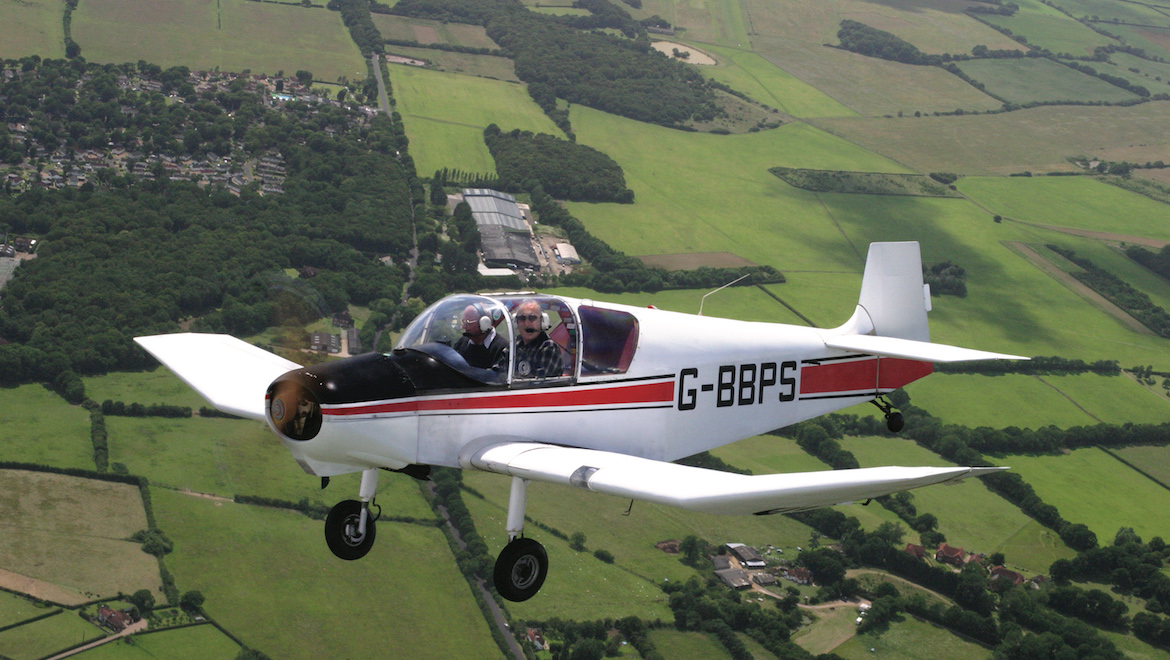
To get the best from such a clean airframe, it’s important to settle it ‘on the step’ by climbing a little above your intended altitude, setting power, trimming out any slight residual elevator force, and then letting the aeroplane gently subside to the required height. For pilots used to less efficient aircraft, the nose seems very low in the cruise, giving excellent forward visibility. Even knowing about this characteristic, I still found myself climbing a couple of times before finally getting the attitude and trim precisely right. The elevator tab trimmer is a tiny lever on the left sidewall, turning through a 120-degree arc. Quite sensitive, it is also useful for getting the trim exactly correct.
Wooden airframes absorb vibration better than metal ones, so a comfortable 2350rpm gave us a commendably smooth 95kt IAS at 2500ft, making a neat 100kt TAS. Andy’s previous Evra prop gave him five more knots, but was more expensive than this current Newton one – both are wooden. Some poorer propellers will inevitably spoil this performance a little, so it pays to shop around.
With a properly leaned 18 to 20-l/hr consumption, full tanks allow a theoretical five hours of cruising or a 500nm range with 45 minutes reserve.
The canopy’s draught sealing looks rudimentary (and it can be difficult to source replacements) but it actually works well in flight; the airflow noise is reasonable, and we experienced none of those piercing wind blasts you get in some other types.
The Jodel’s low speed handling is every bit as good as its other traits, although everything happens at incredibly low airspeeds. Since the payload can be such a high proportion of its total mass, both cruise and stall speeds vary significantly with weight. At 558kg, we were at around 90 per cent of the maximum allowable, and with a forward C of G. Like most aeroplanes of its generation, the Jodel has no artificial electric stall warner, although a 1959 British Airworthiness Directive required small triangular stall ‘breaker strips’ to be glued to the inboard leading-edges to provide some aerodynamic buffeting over the elevators to provide natural stall warning.

I found the handling quite normal in all axes at as low an airspeed as 40kt, but would you believe that the ASI needle had to come all the way back to an indicated 29kt before, with a slight judder and a straightforward nose-drop, we eventually stalled. When I held the stick hard back against the rear stops, this willing little aeroplane just sank gently, nodding and wallowing a little, but still under full control. I suspect the max weight, aft C of G stall would be a little less benign, but I have no reason to believe it would actually be unpleasant.
Returning to base, I found it surprisingly difficult to slow down and descend, so unexpectedly clean is this airframe. For the same reason, I found 600 foot circuits much easier than 1000 foot ones. With such simple systems, there is little to check, except that fuel is selected from the front tank for the approach and landing. All my approaches were made with the throttle closed – the safest way – with a little sideslip to vary the descent angle. The glide angle is quite shallow, but if needed, full rudder gives a twenty degree banked sideslip, doubling the descent rate.
Andy’s recommended 50kt approach speed initially struck me as frighteningly slow, but a moment’s mental arithmetic confirmed that, with a 29kt stall, 1.3 times that, or just 40kt knots, might be okay with some allowance for gusts. Sure enough, at my initial 55kt we floated after the flare, thanks to the ground cushion developed under this long, low wing. Subsequently, 50kt gave me more than adequate control, and felt much more comfortable, while Andy assured me that a 45kt approach was no problem, and even 40kt knots was feasible on a calm day.
The flare and hold-off were instinctive, and it was dead easy to make a succession of three-point touchdowns of gradually increasing gentleness. This is a delightful aeroplane to fly, and one of the easiest tailwheelers to land, provided, as with all taildraggers, you concentrate, and stop any directional deviation before it gets started. As I said at the beginning, it is a ‘friendly’ aeroplane, and it was a real pleasure to renew my acquaintance with the marque.
If you fancy an inexpensive, nice-flying, short-field, efficient two-seat cruiser and have reasonable foot/eye coordination, you should consider a Jodel (if you can find one).
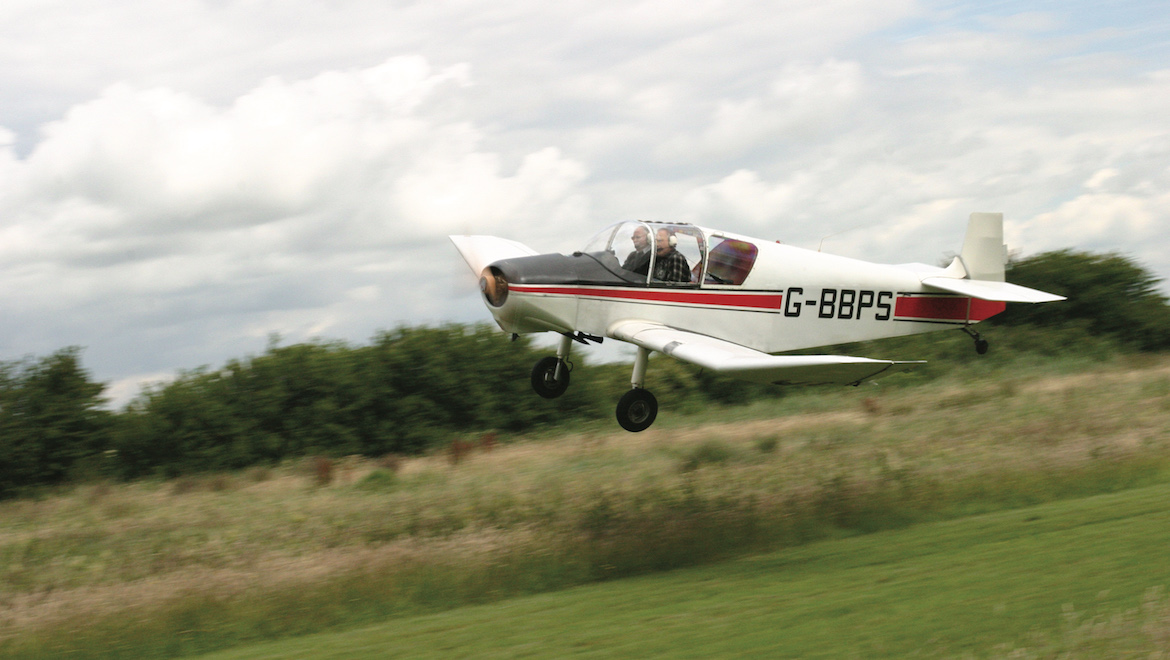
This article originally appeared in the November 2008 edition of Australian Aviation. To read more stories like this, become a member of Australian Aviation here.




